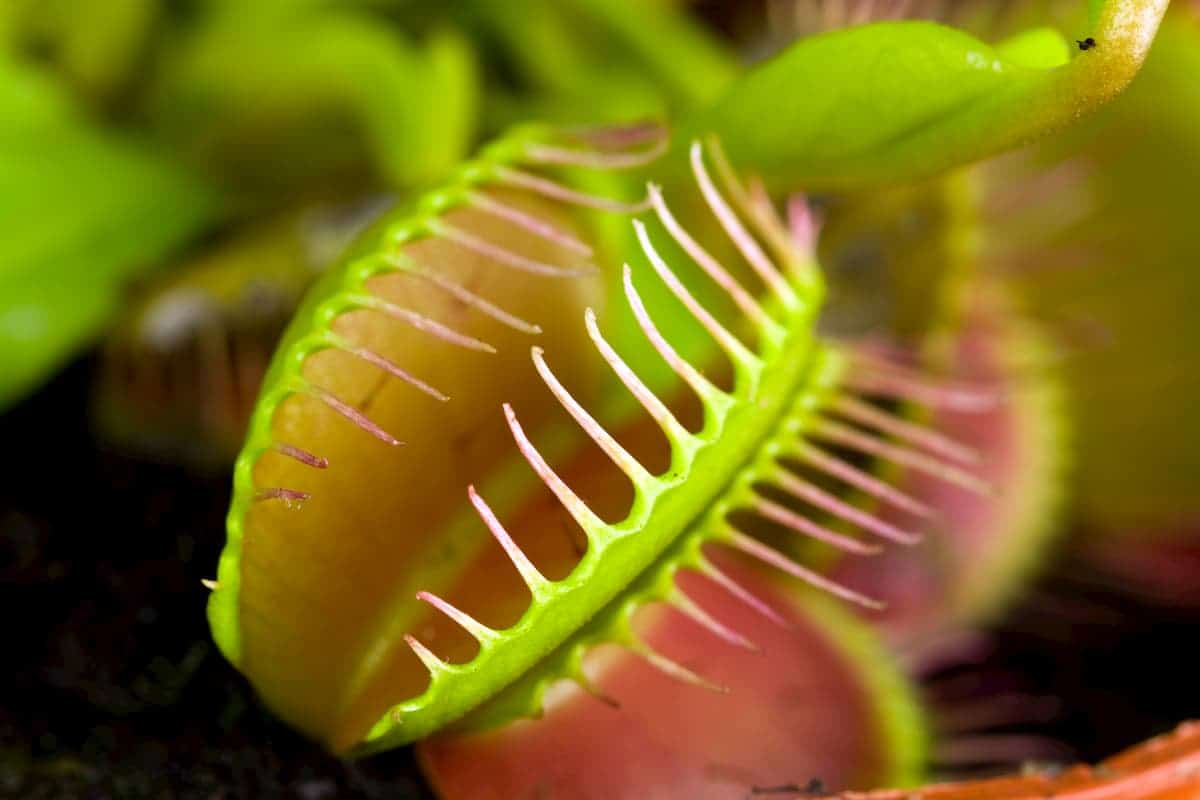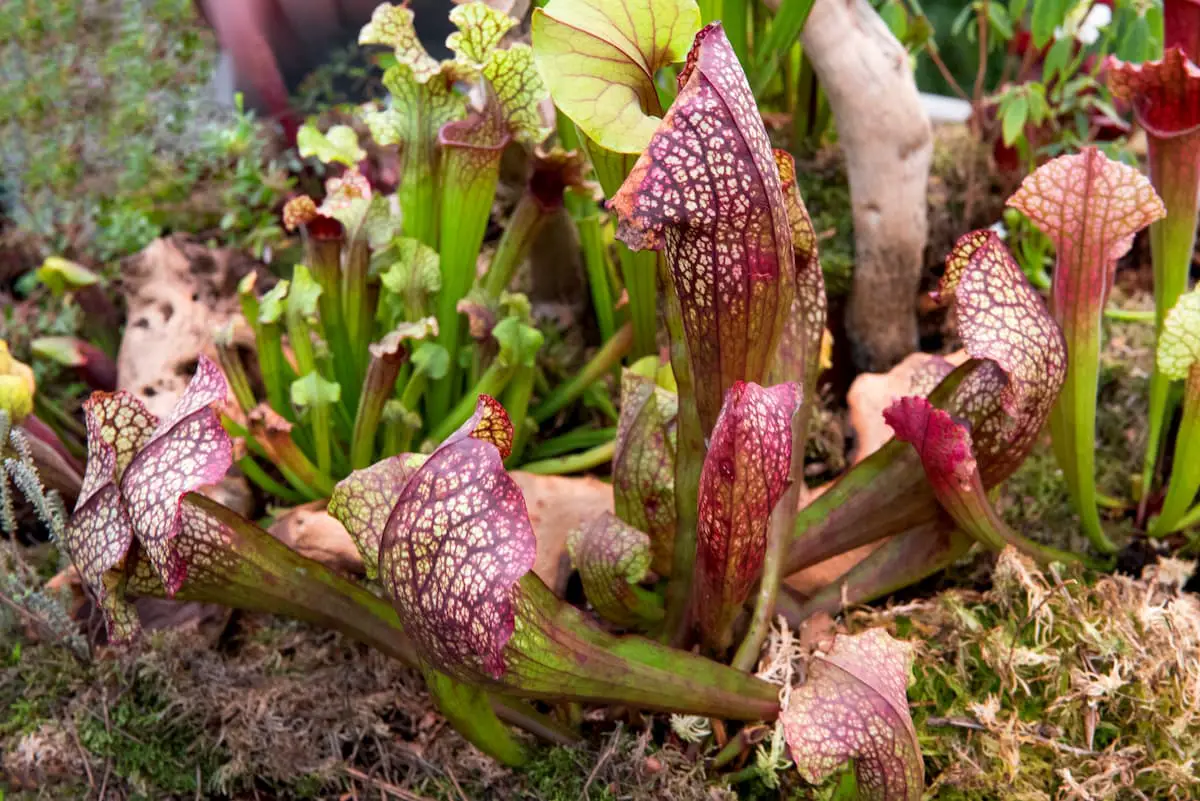The Venus flytrap is a beautiful plant that grows in a variety of climates. While it does not require water, it does need to be exposed to sunlight to continue photosynthesizing.
You can keep it indoors under artificial light, but it is best to leave it outdoors unprotected in warm climates.
How Often Does a Venus Flytrap Need Watering?
One of the most common questions regarding how often does a venus flytrap require watering is whether it is best to use pure moss or soil.
Pure moss retains water and does not offer optimal drainage, so it is best to test the soil after watering the plant.
Sand, on the other hand, helps to keep excessive moisture away from the roots. However, if you prefer to use soil, be sure to use high-quality plant food and use it sparingly.
As a rule, Venus flytraps can survive in both indoor and outdoor environments. In hot or dry climates, they need four to six hours of direct sunlight in the morning.
To minimize the effects of light, you can place the pot in a black plastic bag and cover it with foil.
Alternatively, use a white pot to reduce evaporation. In either case, water the plant only when the soil is almost dry.
Despite their need for moist conditions, Venus flytraps should not sit in standing water, as this can cause root rot and kill the plant.
To avoid drowning your plant, be sure to use reverse osmosis or distilled water. A large pot will retain water longer than a small one, while smaller pots will dry out more quickly.
In general, watering a Venus flytrap every third day is enough to keep it healthy. If you’re having trouble with this, consider relocating your Venus flytrap to a bigger pot.
What Kind of Water Does a Venus Flytrap Need?
If you’re interested in growing a Venus flytrap in your home, you’ve probably wondered: “What kind of water does a venus fly trap need?”
The good news is that the answer is pretty simple! All you need to do is choose a pot, and a tray with drainage holes, and provide the appropriate amount of water.
Ideally, you should provide about an inch of water per day, but you can increase that amount if the temperatures are cool or very hot.
You’ll also need to provide plenty of sunlight since this carnivorous plant likes to live in full sunlight.
Ideally, it will get four to six hours of direct sunlight every day, but if you don’t have access to a south-facing window, you’ll need at least six hours of full sun.
Alternatively, you can use a grow light for 10 to 12 hours per day during the growing season. To ensure the best growth conditions, place a grow light six to eight inches above the plant’s top.
The Venus flytrap doesn’t need to be fed regularly, but it does need to be fed once a month to stay healthy. You can feed it dried blood worms or crickets.
Just make sure to pick worms that are about one-third the size of the trap. This helps the plant grow strong roots.
If you’re unsure how to care for your Venus flytrap, be sure to read the manual carefully!
Can I Use Tap Water For a Venus Flytrap?
If you are considering growing your own Venus flytrap, you may be wondering, can I use tap water? This insect-catching plant thrives in boggy environments.
Therefore, it needs moisture to survive and grow properly. Typically, it needs at least half an inch of water.
Unfortunately, regular tap water is toxic to venus flytraps.
To ensure the best possible health of your plant, use rainwater or clean melted snow to water it. You can also use deionized or distilled water for your venus fly trap.
Although you can use tap water for your Venus flytrap, it is still best to use distilled or RO water instead.
Tap water is likely to contain minerals and other chemicals that can be detrimental to your Venus flytrap.
To avoid chemicals, use distilled or RO water. If you cannot afford distilled water, reverse osmosis water can be connected to your sink and used for your Venus fly trap.
Lastly, you can buy a rain barrel or collect rainwater in a bottle. These are great for keeping plants in terrariums as they are easy to clean and store.
A rain barrel is also great for this purpose because it can look very pretty! Besides, it can be portable and fancy.
But keep in mind that some cities have restrictions on rain barrels, so you should always check with your city’s ordinances before using rain barrels or tap water for your Venus fly trap.
How to Make Distilled Water For Your Venus Flytrap
When you buy bottled water for your Venus flytrap, you may be surprised to find that it’s actually spring water.
Regardless of how purified the water is, it will not be enough to sustain your trap’s health. It must be distilled to be safe for the Venus flytrap.
But this process can be time-consuming, so you may want to consider buying distilled water for your Venus flytrap instead.
If you want to keep your Venus flytrap healthy and happy, you should avoid tap or spring water, which contains high mineral content.
This will eventually damage your flytrap. The best solution is to use water that is distilled or has passed through a reverse-osmosis unit.
While it is more convenient, it’s not always practical or economical to purchase distilled water. If you’re going to buy bottled water, be sure to purchase a reverse-osmosis unit.
There are several ways to distill water:
One method is to boil tap water to remove contaminants. You can then pour the distilled water into a plastic bowl. When the bowl cools, the steam will come out and form a liquid.
Dissolved minerals and salts in tap water will be removed from the water, so this is ideal for your Venus fly trap. You may also try filtering the water using filter paper.
Another option is to use rainwater. Venus flytraps need humid conditions and sunlight, so they prefer 24-hour light. During the holiday season, you can place a plastic bag over the saucer with water.
In the case of the latter, you can simply keep it in plastic bags during the holidays. But if rainwater isn’t available, you can always use distilled water instead.
A large water jug can hold several gallons of distilled water.
Tips For Dormancy Watering
If you’re considering putting a Venus flytrap into a dormancy period, you’ll want to follow these tips for dormancy watering.
First, treat the Venus flytrap with a fungicide. After you’ve done this, place it in a plastic bag and wrap it up in damp sphagnum moss.
Make sure you check it every couple of weeks to make sure it doesn’t develop mold. Watering the venus flytrap during dormancy should be done every two to three weeks, and it’s crucial to check it for mold.
Second, avoid feeding the plant when it’s in dormancy. Feeding it will use up too much energy and can lead to a dead plant.
To avoid this, give your Venus flytrap a decent amount of light during its dormancy.
Even though it’s not active, it’ll still need a decent amount of light to stay healthy. A well-lit aquarium can provide plenty of light for the Venus flytraps.
In addition to proper potting medium, Venus fly traps also need full sun. The ideal mixture is half sphagnum peat and half coarse sand.
Avoid peat that has too much mineral content or sand that’s too soft. Also, keep a pan of water underneath the pot so that the plant stays moist and alive.
If this doesn’t work, try using distilled water instead.
Venus Fly Trap Watering Instructions
If you’ve ever tried to grow a Venus flytrap, you’re probably wondering how to properly water it.
Aside from following the instructions on the plant’s care label, here are a few tips to keep your Venus flytrap healthy.
You’ll want to keep the soil slightly moist so that it doesn’t suffer from brown, crispy leaves. Also, it’s a good idea to place it near a humidifier.
When feeding your venus flytrap, you should make sure to choose the proper food and watering schedule.
It needs to be fed on a regular basis, although it can go for long periods without feeding. Just keep in mind that the plant won’t grow as fast if it doesn’t get regular feedings.
Don’t give it meat or vegetables, as these can cause toxicity. Instead, give it live prey like meal worms or crickets.
Venus fly traps need four hours of direct sunlight each day during their growing season. This is because they depend on photosynthesis for growth.
However, they do not appreciate being flooded with water. During their dormancy, you don’t need to feed them.
You can also feed them in the winter to make them more effective. Just make sure that the trap has plenty of water so that they don’t dry out.




Leave a Reply